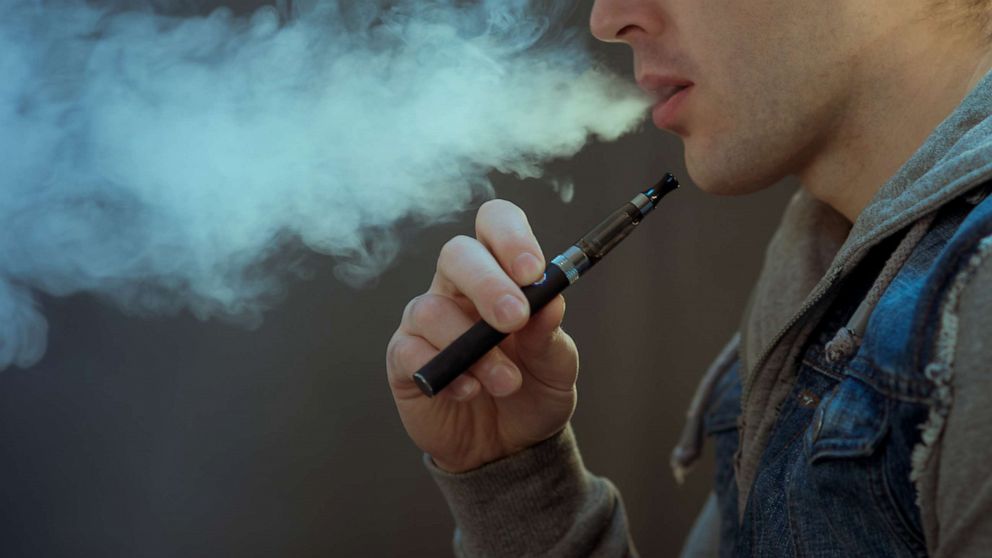WARNING: This product contains nicotine. Nicotine is an addictive chemical.
Formaldehyde is a colorless, strong-smelling gas widely known for its use in building materials, household products, and industrial applications. It is also a byproduct of combustion and certain chemical reactions. In the context of vaping, formaldehyde can be produced when the components of e-liquids are heated at high temperatures. This has raised concerns about its presence in e-cigarette aerosols and the potential health risks associated with inhaling it. As vaping continues to grow in popularity, understanding the risks and how to minimize them is crucial for consumers.
The presence of formaldehyde in e-cigarettes is a topic of debate and concern within public health communities. While vaping is often marketed as a safer alternative to traditional smoking, the potential production of harmful compounds, including formaldehyde, cannot be overlooked. It is important to distinguish between the conditions under which formaldehyde is likely to form and typical vaping practices. This guide explores how formaldehyde is produced in e-cigarettes, its health implications, influencing factors, and ways to minimize exposure while vaping.
Formaldehyde is not an ingredient in e-liquids but can be produced during the vaping process. This occurs when the heating element in e-cigarettes, known as the coil, reaches high temperatures. At these elevated temperatures, the propylene glycol and glycerin in e-liquids can decompose, leading to the formation of formaldehyde and other carbonyl compounds. Studies have shown that using e-cigarettes at higher voltage or wattage settings can increase formaldehyde production. In particular, high-powered devices that reach extreme temperatures are more likely to produce significant levels of formaldehyde.
One of the critical conditions for formaldehyde formation is the occurrence of “dry puffs” or “dry hits,” where the e-liquid is not adequately supplied to the heating coil. This typically happens when the e-liquid is low or when the wicking material is not saturated enough, leading to overheating. During dry puffs, the coil temperature rises drastically, decomposing the glycerin and propylene glycol into formaldehyde-releasing agents. It is important to note that under normal vaping conditions, where the device is used at moderate settings and dry hits are avoided, formaldehyde levels are generally lower and comparable to everyday environmental exposure.

Formaldehyde is classified as a human carcinogen by the International Agency for Research on Cancer (IARC). Chronic exposure to formaldehyde is linked to an increased risk of certain cancers, particularly nasopharyngeal cancer and leukemia. Inhalation of formaldehyde can also cause immediate health effects, including eye, nose, and throat irritation, coughing, and shortness of breath. For people with respiratory conditions such as asthma, formaldehyde exposure can exacerbate symptoms, leading to more severe breathing difficulties. Therefore, understanding and mitigating exposure risks in vaping is vital for long-term health.
However, it is essential to consider the context of formaldehyde exposure in vaping compared to other sources, such as cigarette smoke. Traditional cigarette smoke contains higher concentrations of formaldehyde due to the combustion process. In contrast, e-cigarettes do not involve combustion, and under typical vaping conditions, formaldehyde levels are generally lower. Nonetheless, when vapers use high-powered devices or experience dry puffs, formaldehyde concentrations can rise to levels comparable to cigarette smoke. This variability in exposure highlights the importance of responsible vaping practices and informed device usage.
Several factors influence the amount of formaldehyde produced during vaping. One of the most significant factors is the power setting of the device. Higher voltage or wattage settings lead to increased coil temperatures, which in turn enhance the decomposition of e-liquid components into formaldehyde and other harmful compounds. Research indicates that formaldehyde production is significantly higher when e-cigarettes are used at maximum power settings, emphasizing the need for moderation in power adjustments.
Additionally, the composition of e-liquids plays a critical role in formaldehyde formation. E-liquids are typically composed of propylene glycol, glycerin, flavorings, and nicotine. The ratio of propylene glycol to glycerin, as well as the presence of certain flavorings, can affect the chemical reactions that occur during heating. Some flavoring agents are more prone to breaking down into formaldehyde-releasing compounds under high temperatures. Moreover, the design and condition of the device, including coil type and age, also impact formaldehyde production. Old or poorly maintained coils can produce more formaldehyde due to uneven heating and residue buildup.

To minimize formaldehyde exposure while vaping, users should adopt responsible vaping practices and make informed choices. One of the most effective ways is to use e-cigarettes at moderate power settings. Avoiding maximum voltage or wattage reduces the risk of overheating and excessive formaldehyde production. Additionally, it is crucial to maintain the vaping device properly by regularly cleaning and replacing coils and other components. This ensures efficient operation and prevents issues such as dry puffs that lead to formaldehyde spikes.
Choosing high-quality e-liquids from reputable manufacturers can also help mitigate formaldehyde exposure. Premium e-liquids typically disclose their ingredients and avoid harmful additives. Opting for e-liquids with balanced propylene glycol and glycerin ratios can minimize formaldehyde formation. Furthermore, users should pay attention to their vaping habits and avoid prolonged or frequent puffs that can overheat the coil. Recognizing the signs of dry puffs, such as a burnt taste, is essential for preventing high-temperature exposure.
The presence of formaldehyde in e-cigarette aerosols has raised valid health concerns. However, it is crucial to understand that formaldehyde production in vaping is largely influenced by device settings, e-liquid composition, and user habits. By being mindful of these factors, vapers can significantly reduce their exposure to formaldehyde and other harmful compounds. Responsible vaping practices, such as moderate power usage, proper device maintenance, and informed e-liquid selection, play a pivotal role in ensuring safer vaping experiences.
While vaping is generally considered a less harmful alternative to smoking, it is not entirely risk-free. Users should remain informed about potential health risks, including formaldehyde exposure, and take proactive measures to mitigate them. By understanding the science behind formaldehyde formation and implementing safer vaping practices, individuals can make more informed choices that prioritize their health and well-being.
